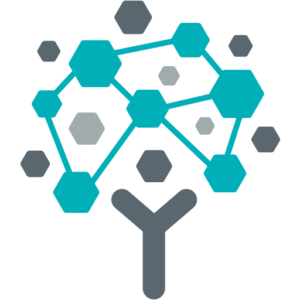Employees are a vital asset to any organization. When it comes to talent acquisition and management, today’s fast-paced business environment might leave any organization relying on outdated practices behind. Fortunately, technology is evolving to streamline these processes and many others.
Utilizing industry-leading technology solutions can improve how your organization recruits, onboards, and manages its employees, helping you attract and retain the talent you need. Consider a few top ways technology can improve the experience for your employees and HR team.
Talent Acquisition
Finding the right people to help run your organization is an important task. To ensure your organization’s success, you need to fill roles with talented people and retain them over the long term. Talent acquisition technology can help your organization find and recruit the best candidates for each position. Here are a few strategies for using talent acquisition technology:
1. Consider Your Goals
You want to convince the right talent to join your organization. To do that, you need to understand your needs. Your organization’s goals and plans for both the short and long term can provide valuable insight as you recruit new employees.
Robust reporting software helps you create unique financial reports to develop a talent acquisition strategy roadmap. Through advanced reporting technology, you can effortlessly generate budget reports and improve transparency into your organization’s financial position. As you plan ways to grow by hiring new people, financial statements show the most critical places to direct your attention.
2. Use Data to Create First-Rate Acquisition Materials
Part of any talent acquisition strategy is telling your organization’s story. Many organizations and businesses use data and marketing to recruit qualified candidates faster.
Data can help your HR team determine where your top talent comes from and cultivate a marketing strategy to reach them more efficiently. Use data analytics to craft job listings and ensure your postings aren’t deterring qualified candidates. Collaboration between the marketing department and HR can be a successful strategy for creating high-quality acquisition materials.
3. Offer Flexible Work Options
Many organizations offer remote and flexible work options to attract their team. Technology enables employees to improve their work-life balance, and many candidates have come to expect the option. According to 2021 data, over 70% of employees want to continue having the ability to work remotely.
Digital access is the key to a successful remote or flexible work policy. Leveraging technology solutions to offer flexible work options can help your organization increase its value proposition to potential job candidates and improve their satisfaction once they start.
Onboarding
Once you hire the right candidates, the next step is onboarding. A positive onboarding experience can encourage employees to stay at your organization and set them up for success in their roles. Leveraging technology as part of your onboarding process can significantly impact employee satisfaction and retention. Consider the ways employee onboarding technology can improve engagement and productivity among your employees:
1. Increase Engagement With Virtual Reality and Gamification
Improving employee engagement in the onboarding process can positively impact their overall experience at your organization. Onboarding strategies like virtual reality and gamification are for more than tech companies. As these technologies become more advanced, more companies and organizations are utilizing them to train new hires. Virtual reality can help with employee onboarding by creating a more immersive experience for employees.
Gamification can also boost employee engagement. Gamification is the process of adding gaming elements and principles to training processes. Many technology solutions allow employees to advance through levels, celebrate achievements, and receive immediate feedback during training, making training fun and improving motivation.
2. Make Onboarding Paperless
Traditional training processes can feel inconvenient and full of paperwork. Employee onboarding technology can streamline the onboarding process and reduce or eliminate paper processes. Switching to a virtual training program relieves your HR team from having to handle a lot of manual processes.
Your HR team can use employee onboarding technology to automate data collection, create reusable templates, and gather feedback. An online training platform can also protect the sensitive employee data HR handles during employee onboarding with encryption.
3. Empower Your HR Team Through Continued Learning
Your HR and hiring teams need effective onboarding tools to stay relevant in a changing hiring landscape. It’s vital for your team to continue learning through ongoing training. Use onboarding technology to help your recruiting and hiring team grow their skills and develop a learning culture.
Development
One of the top concerns for modern organizations is managing employee turnover. Many organizations struggle to maintain an adequate supply of talent. The solution is managing employees more effectively and investing in employees individually along with programs to engage and retain them at every stage.
Technology and employee development go hand in hand. Consider a few ways technology can improve the employee experience and help your organization retain its workforce:
1. Create a Plan
Tailor your talent development strategy to your specific organization and its needs. If you’ve lost market share, you need talent to help you get it back. If you’ve just acquired a competitor, you need talent that can help you integrate and move forward successfully. Use technology to gather data on your organization’s financial and human resource needs so you can address the gaps.
2. Build a Talent Management Team
Talent management should be the work of senior leadership and HR professionals. Both groups have meaningful insights and experiences that can contribute to better talent management at your organization. Encouraging and facilitating open communication between the leaders on your talent management team makes for more successful initiatives.
3. Gather Insights Into Your Progress
As you create leadership development programs, monitor and track your progress. Communicating regularly with employees through surveys and feedback meetings helps talent management teams gain an understanding of how well their initiatives are working.
Remember that technology should be a tool for talent development, not the entire solution. It takes engaged employees to cultivate other employees. The best way to find and retain top talent is to mix expertise with technology driven by knowledgeable experts.
Improve HR Processes With HR Software From MIP Fund Accounting®
Technology can be one of the most powerful tools at your organization’s disposal for putting the right people in the correct positions. Many organizations are using technology solutions at every step of the employee journey, from recruiting to onboarding and continued employee development.
MIP Fund Accounting® provides software solutions, like our HR software, to help organizations manage their employees, accounting, reporting, and more. With MIP People, you can plan your human capital and make informed decisions. Our solution is flexible, scalable, and secure, so it can grow as your organization does and meet its unique needs.
If you’re interested in seeing MIP in action, request a free demo from our experts today.
Share this post





